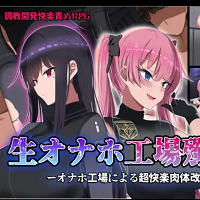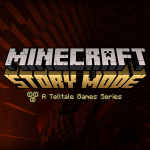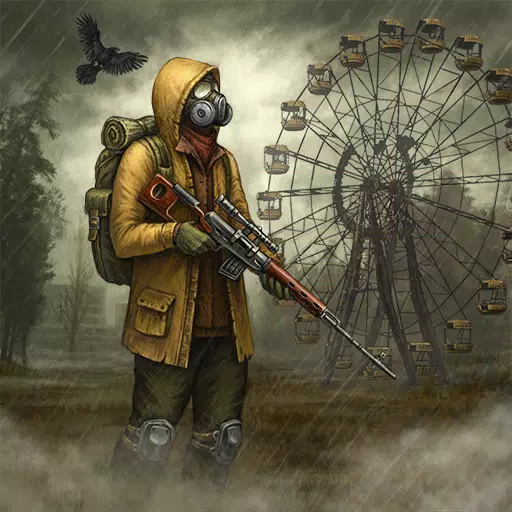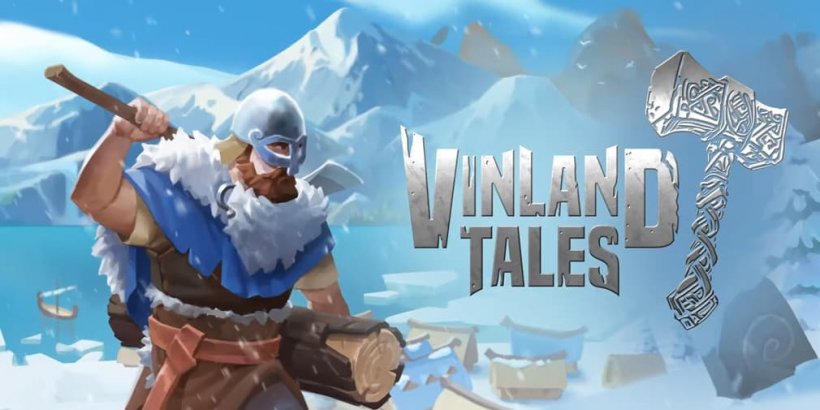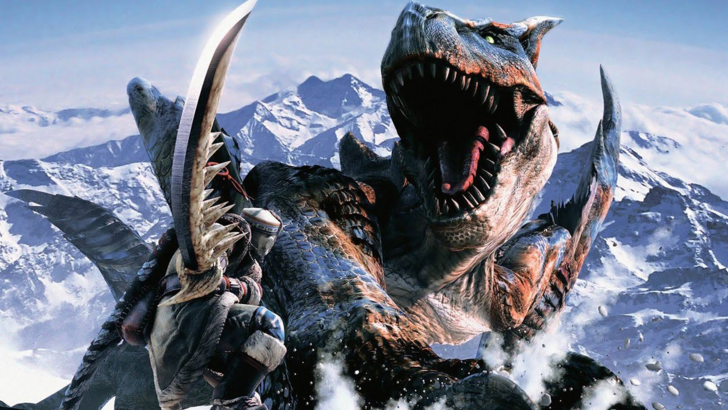 Monster Hunter's renowned for its diverse weapon roster and engaging gameplay. But did you know even more weapons exist, absent from recent titles? This deep dive explores Monster Hunter's weapon history.
Monster Hunter's renowned for its diverse weapon roster and engaging gameplay. But did you know even more weapons exist, absent from recent titles? This deep dive explores Monster Hunter's weapon history.
← Return to Monster Hunter Wilds' main article
A Look Back at Monster Hunter Weapon Types
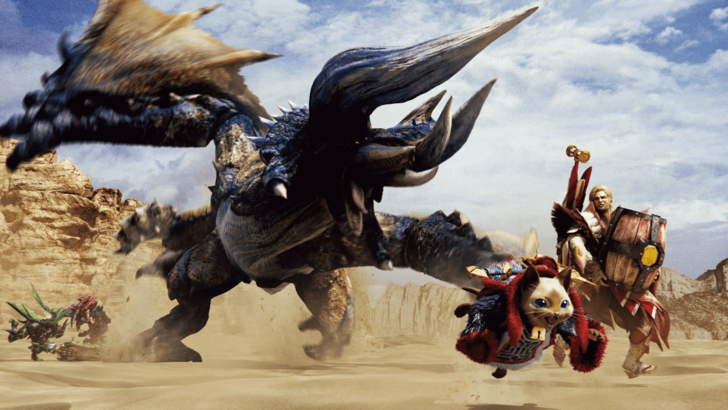 Monster Hunter boasts a rich history, spanning over two decades since its 2004 debut. A key element is its varied weapon selection. Monster Hunter Wilds offers fourteen distinct weapon types, each with unique strengths, weaknesses, movesets, and mechanics.
Monster Hunter boasts a rich history, spanning over two decades since its 2004 debut. A key element is its varied weapon selection. Monster Hunter Wilds offers fourteen distinct weapon types, each with unique strengths, weaknesses, movesets, and mechanics.
The evolution from the original Great Sword to its modern counterpart showcases significant advancements in mechanics and movesets. Furthermore, some older weapons remain exclusive to certain regions. Let's examine Monster Hunter's weapon evolution.
First Generation Weapons
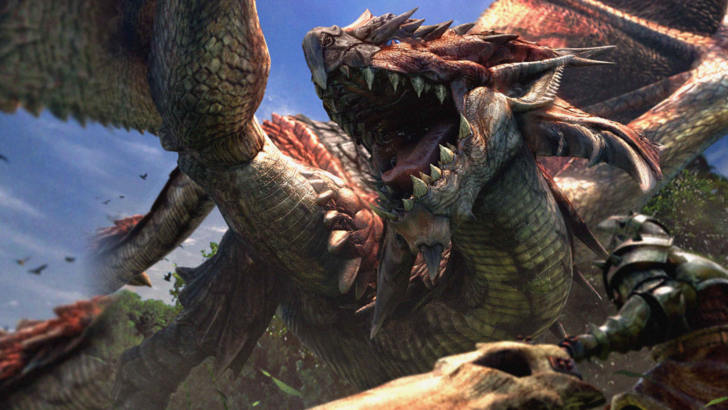 These weapons debuted in the original Monster Hunter and its variants. These foundational weapons have endured, evolving with enhanced movesets and mechanics.
These weapons debuted in the original Monster Hunter and its variants. These foundational weapons have endured, evolving with enhanced movesets and mechanics.
Great Sword
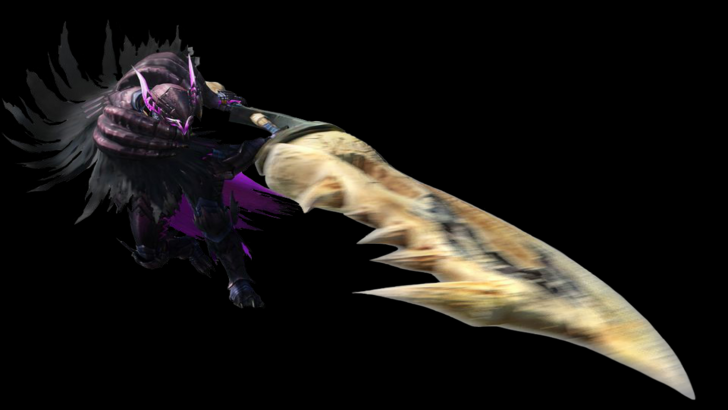 The franchise icon, the Great Sword, arrived in 2004. Its high damage potential comes at the cost of slow attacks and movement. It can even function as a makeshift shield, consuming stamina and sharpness.
The franchise icon, the Great Sword, arrived in 2004. Its high damage potential comes at the cost of slow attacks and movement. It can even function as a makeshift shield, consuming stamina and sharpness.
Initially, its gameplay revolved around hit-and-run tactics. While combos were possible, slow animations hindered their practical use. A unique feature was increased damage when striking with the blade's center.
Monster Hunter 2 introduced the iconic Charged Slash, a multi-level charge attack culminating in a devastating swing. This remains a cornerstone of its gameplay.
Subsequent games expanded upon the charging mechanic, adding finishers and improving combo flow. Monster Hunter World, for example, introduced a shoulder tackle, allowing for quicker access to charged attacks.
The Great Sword boasts a low skill floor but a high skill ceiling. Mastery requires maximizing damage output through precise timing of the True Charged Slash.
Sword and Shield
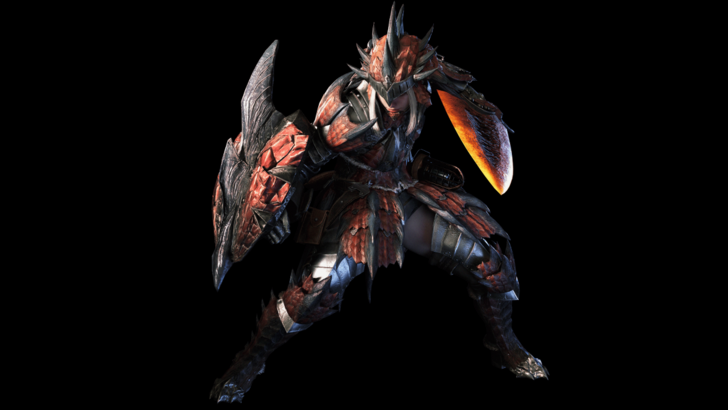 The Sword and Shield embodies versatility. Its balanced design features moderate damage, quick combos, blocking capabilities, high mobility, and utility. Initially considered a beginner weapon, its complexity has grown with added mechanics and attacks.
The Sword and Shield embodies versatility. Its balanced design features moderate damage, quick combos, blocking capabilities, high mobility, and utility. Initially considered a beginner weapon, its complexity has grown with added mechanics and attacks.
Early gameplay focused on rapid slashes and high mobility. Monster Hunter 2 added the ability to use items while the weapon was drawn.
Later iterations expanded the moveset, including shield bash combos (Monster Hunter 3), backstep and jumping attacks (Monster Hunter 4), and Perfect Rush/aerial finishers (Monster Hunter World/Rise).
Despite its short range and moderate damage, the Sword and Shield is a true jack-of-all-trades, offering infinite combos, quick attacks, evasive maneuvers, powerful finishers, and a reliable block. Its depth often goes unnoticed.
Hammer
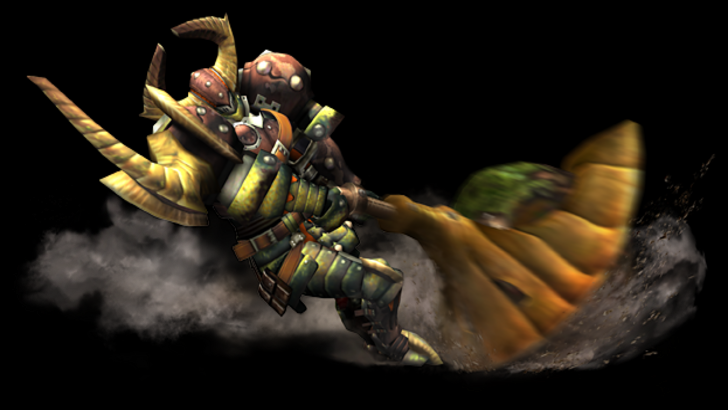 One of two blunt weapons (no tail cutting!), the Hammer excels at breaking parts, particularly heads, leading to KOs (Monster Hunter 2 onwards).
One of two blunt weapons (no tail cutting!), the Hammer excels at breaking parts, particularly heads, leading to KOs (Monster Hunter 2 onwards).
Its gameplay mirrors the Great Sword's hit-and-run style, but with surprisingly high mobility and no blocking. Its charge mechanic uniquely allowed movement during charging.
Significant changes arrived in Monster Hunter World and Rise, introducing the Big Bang and Spinning Bludgeon attacks, bolstering its offensive capabilities beyond its signature golf swing and Superpound.
Two modes, Strength and Courage, were added, altering charge attacks and effects. Mastering mode switching is crucial for optimal performance.
The Hammer's objective is simple: target the head for KOs, opening opportunities for devastating charged attacks and combo finishers.
Lance
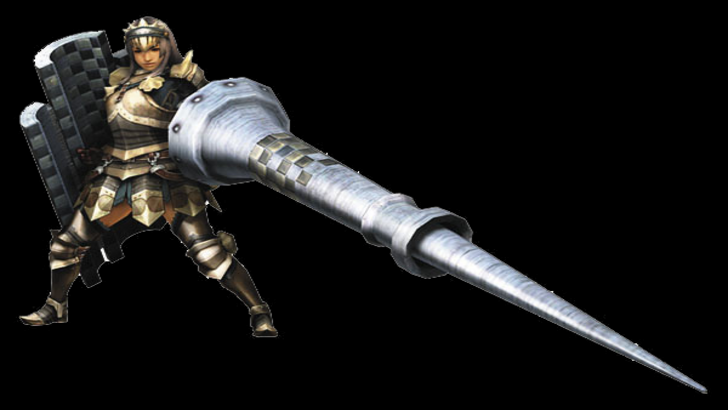 The Lance embodies the principle of defense being the best offense. Its long reach allows for ranged attacks, while its large shield provides exceptional defense, blocking most attacks (even unguardable ones with proper skills). Despite its limited mobility and attacks, its damage output is considerable.
The Lance embodies the principle of defense being the best offense. Its long reach allows for ranged attacks, while its large shield provides exceptional defense, blocking most attacks (even unguardable ones with proper skills). Despite its limited mobility and attacks, its damage output is considerable.
Gameplay resembles an outboxer's strategy: poking from a distance while maintaining a defensive guard. Its core attacks are forward and upward thrusts, chainable up to three times. A counter mechanic was added across the series. Running charge and shield bash attacks close the distance.
Often considered "boring" due to its less flashy animations, the Lance's unique design rewards defensive play. It transforms the hunter into a formidable tank, surpassing even the Gunlance in defensive capabilities.
Light Bowgun
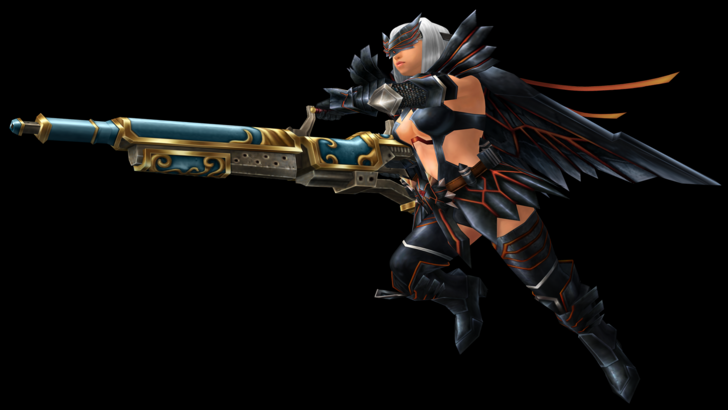 A ranged weapon from the first generation, the Light Bowgun maintains its presence throughout the series. Its mobility and fast reload speed make it easier to handle than its heavier counterpart.
A ranged weapon from the first generation, the Light Bowgun maintains its presence throughout the series. Its mobility and fast reload speed make it easier to handle than its heavier counterpart.
Its mobility comes at the cost of limited ammunition and firepower. Customizable attachments (long barrels, silencers, scopes) allow for personalization.
The Light Bowgun compensates for its weaker damage with Rapid Fire capabilities for certain ammo types.
Monster Hunter 4 introduced "Critical Distance," adding depth to ranged combat by optimizing damage based on distance and ammunition type.
Monster Hunter World introduced Wyvernblast (ground bombs) and a slide maneuver, enhancing its run-and-gun style.
The Light Bowgun has evolved beyond a mere "weaker" version of the Heavy Bowgun, offering a simpler yet robust and effective ranged option.
Heavy Bowgun
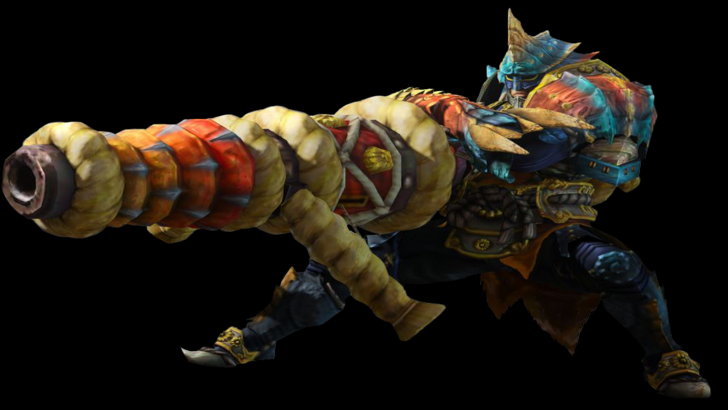 The Heavy Bowgun, the premier ranged weapon of the first generation, delivers high damage and access to most special ammunition. Its size and weight, however, significantly limit mobility.
The Heavy Bowgun, the premier ranged weapon of the first generation, delivers high damage and access to most special ammunition. Its size and weight, however, significantly limit mobility.
While the Light Bowgun prioritizes mobility, the Heavy Bowgun offers flexibility through its diverse ammunition options. Its slow movement is offset by the ability to equip a shield.
Its design remained largely unchanged initially, serving as a powerful artillery or support weapon.
Monster Hunter 3 introduced Siege Mode for continuous firing without reloading. Monster Hunter World added Wyvernheart (minigun) and Wyvernsnipe (powerful single-shot) special ammo, requiring strategic ammunition management.
The Heavy Bowgun's core identity remains consistent: powerful ammunition for substantial damage output.
Dual Blades
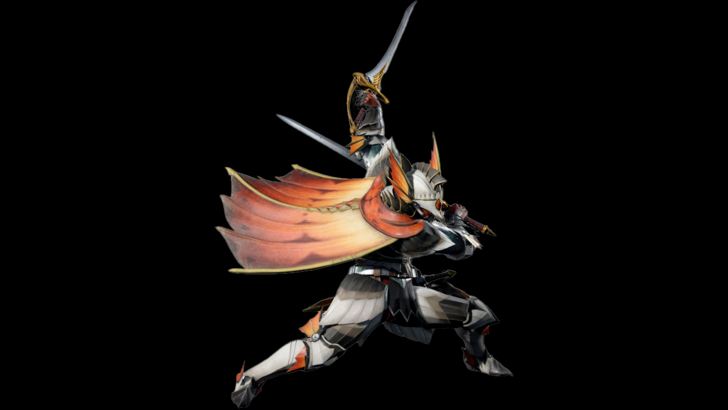 The flashy Dual Blades prioritize speed and are exceptionally effective at inflicting status ailments and elemental damage due to their multi-hit attacks. Interestingly, despite being a first-generation weapon, it was only introduced in the Western release of the original Monster Hunter.
The flashy Dual Blades prioritize speed and are exceptionally effective at inflicting status ailments and elemental damage due to their multi-hit attacks. Interestingly, despite being a first-generation weapon, it was only introduced in the Western release of the original Monster Hunter.
Its gameplay emphasizes rapid attacks and fluid combos, surpassing the Sword and Shield in pure offensive power. Individual attacks are weak, but their speed accumulates significant damage.
Demon Mode, a temporary state boosting damage and access to more attacks, consumes stamina.
Monster Hunter Portable 3rd/3 Ultimate introduced the Demon Gauge, filling with attacks to activate Archdemon Mode, eliminating stamina drain.
The Demon Dash, a unique movement tool, was enhanced in Monster Hunter Generations Ultimate with Adept Hunter Style's perfect dodge, granting damage buffs.
While the core remains consistent, refinements to powered-up states and the Demon Dash have enhanced its offensive capabilities.
Second Generation Weapons
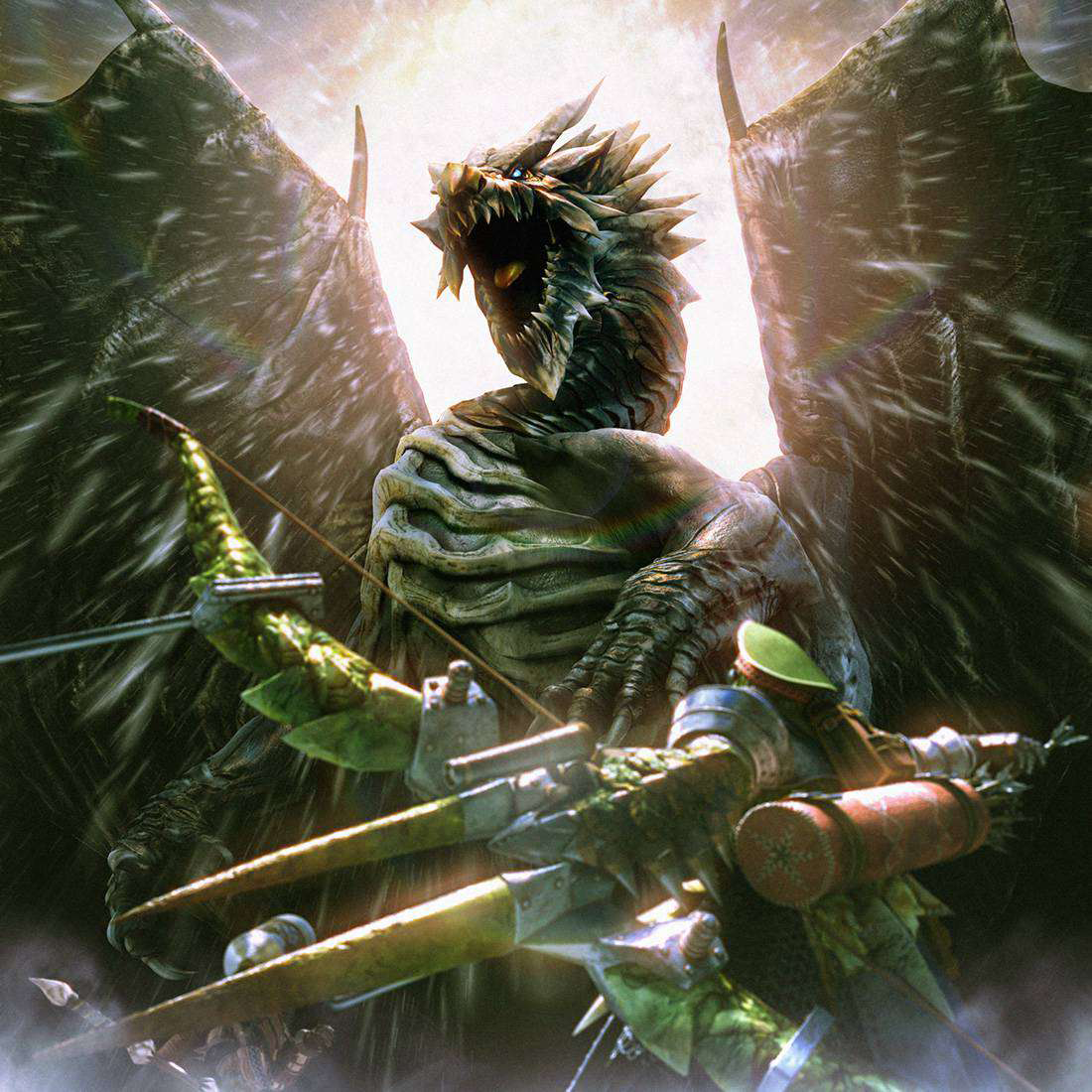 Introduced in the second generation, these weapons can be considered counterparts to the first generation weapons, offering distinct movesets and mechanics.
Introduced in the second generation, these weapons can be considered counterparts to the first generation weapons, offering distinct movesets and mechanics.
Long Sword
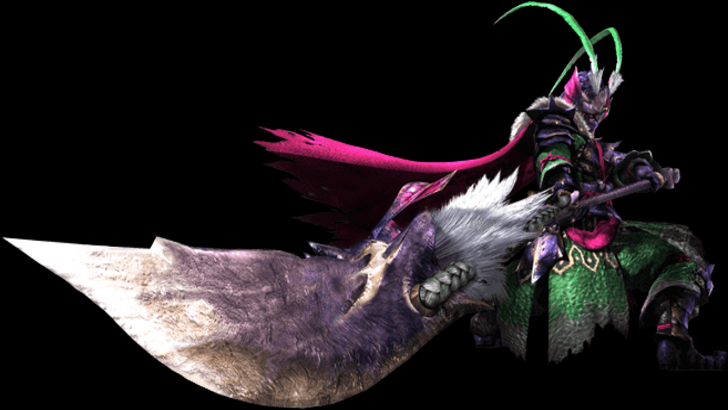 The Long Sword is known for its fluid combos, high damage, and intricate mechanics. While visually similar to katanas among the Great Swords in the first game, it was officially introduced in Monster Hunter 2 with its unique moveset.
The Long Sword is known for its fluid combos, high damage, and intricate mechanics. While visually similar to katanas among the Great Swords in the first game, it was officially introduced in Monster Hunter 2 with its unique moveset.
Its core mechanic is the Spirit Gauge, filled by landing attacks. A full gauge activates the Spirit Combo, a powerful attack string.
Monster Hunter 3 added Spirit Roundslash, a finisher increasing the Spirit Gauge to three levels (white, yellow, red), each providing stronger attack buffs.
Monster Hunter World introduced Spirit Thrust Helm Breaker and Foresight Slash (a parry), enhancing combo flow.
Iceborne's Iai Stance added Iai Slash and Iai Spirit Slash, providing faster Spirit Gauge filling and additional parries.
The Long Sword's evolution emphasizes combo-oriented gameplay, shifting towards counter-based play with its new parry mechanics.
Hunting Horn
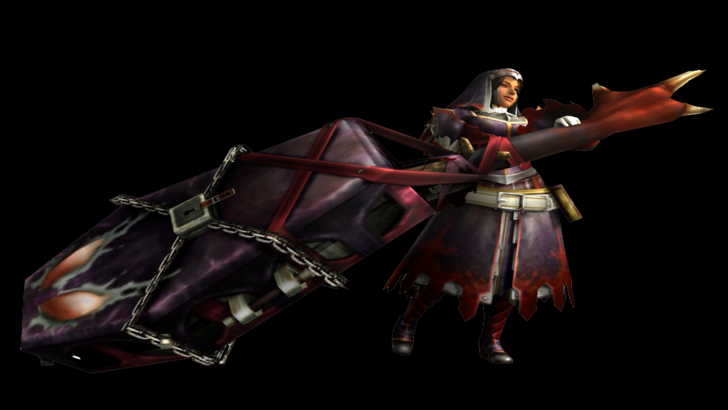 The support weapon, the Hunting Horn, deals blunt damage and focuses on stunning monsters by targeting the head. Introduced in Monster Hunter 2, its unique Recital mechanic allows for various beneficial effects (attack/defense buffs, healing) through note combinations.
The support weapon, the Hunting Horn, deals blunt damage and focuses on stunning monsters by targeting the head. Introduced in Monster Hunter 2, its unique Recital mechanic allows for various beneficial effects (attack/defense buffs, healing) through note combinations.
Its damage is generally lower than the Hammer due to its support capabilities.
Improvements to the Recital mechanic across the series focused on streamlining its integration into combat. Monster Hunter 3 Ultimate allowed note playing during attacks.
Monster Hunter World enabled song queuing, improving fluidity. Echo Notes (Iceborne) provided additional buffs in specific areas.
Monster Hunter Rise significantly simplified Recital, making it more accessible but sacrificing some complexity.
The Hunting Horn's evolution reflects a balance between accessibility and the depth of its support capabilities.
Gunlance
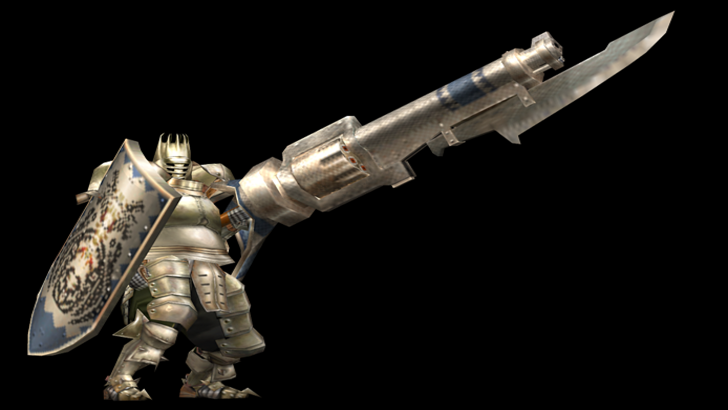 A hybrid of Lance and Bowgun, the Gunlance combines a shield and lance with explosive shelling. Its attacks are primarily slashing, unlike the Lance's piercing attacks.
A hybrid of Lance and Bowgun, the Gunlance combines a shield and lance with explosive shelling. Its attacks are primarily slashing, unlike the Lance's piercing attacks.
Its gameplay revolves around shelling, with different shelling types affecting attacks. Wyvern's Fire is a powerful charged shelling attack.
Monster Hunter 3 added quick reload, a Full Burst attack, and the ability to charge additional shells.
Monster Hunter X introduced the Heat Gauge, increasing damage with shelling usage but risking overheating.
Monster Hunter World added Wyrmstake Shot, a powerful impaling finisher.
The Gunlance's unique design requires careful management of shelling to maximize damage output.
Bow
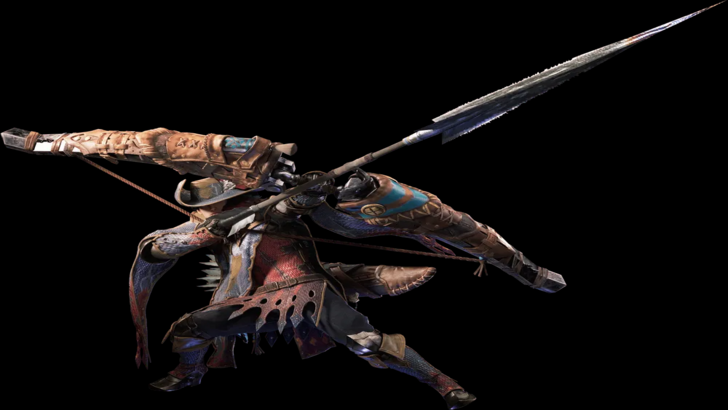 The most agile ranged weapon, the Bow excels in close-to-mid-range combat, utilizing its mobility for hit-and-run tactics. It functions similarly to a melee weapon, relying on combos and chargeable attacks.
The most agile ranged weapon, the Bow excels in close-to-mid-range combat, utilizing its mobility for hit-and-run tactics. It functions similarly to a melee weapon, relying on combos and chargeable attacks.
It emphasizes multi-hit attacks for elemental damage and uses coatings to enhance damage or inflict status effects.
While Shot Types were present in earlier games, Monster Hunter World integrated them into the base moveset, creating a more fluid combo system. Close-Range Coating became infinite.
Monster Hunter Rise reintroduced Shot Types tied to charge levels.
The Bow's evolution has refined its aggressive, combo-heavy ranged playstyle, differentiating it from Bowguns.
Third and Fourth Generation Weapons
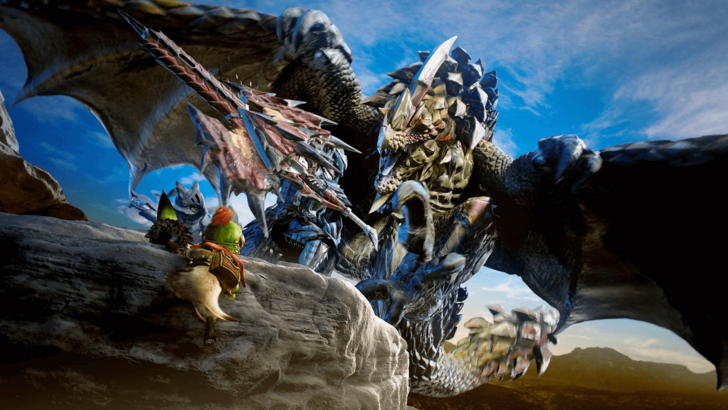 These weapons, introduced in Monster Hunter 3 and 4, feature morphing abilities and unique mechanics.
These weapons, introduced in Monster Hunter 3 and 4, feature morphing abilities and unique mechanics.
Switch Axe
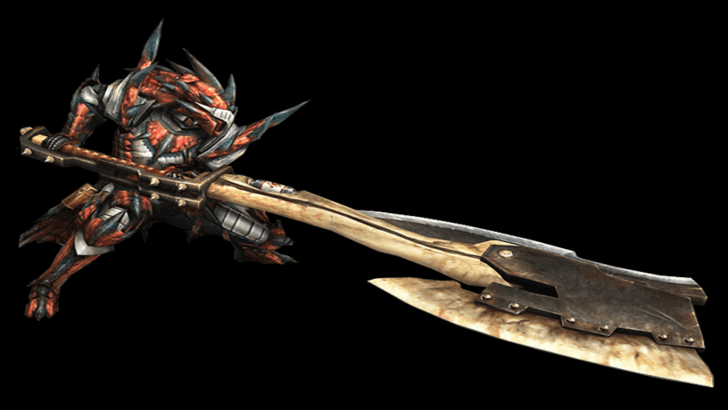 The Switch Axe (Monster Hunter 3) has two modes: Axe Mode (mobile, long-range) and Sword Mode (higher damage, phials, Elemental Discharge finisher).
The Switch Axe (Monster Hunter 3) has two modes: Axe Mode (mobile, long-range) and Sword Mode (higher damage, phials, Elemental Discharge finisher).
Gameplay revolves around balancing both modes. Axe Mode offers mobility and combos, while Sword Mode delivers higher damage.
Monster Hunter World introduced Amped State, empowering Sword Mode attacks.
Monster Hunter Rise extended Amped State to both modes, encouraging mode switching.
The Switch Axe's unique form-swapping mechanics create a dynamic and explosive combat style.
Insect Glaive
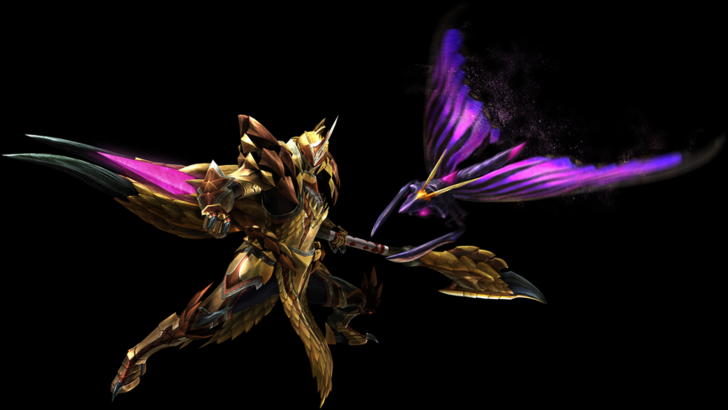 The Insect Glaive (Monster Hunter 4) specializes in aerial combat, utilizing a Kinsect to collect essences for buffs.
The Insect Glaive (Monster Hunter 4) specializes in aerial combat, utilizing a Kinsect to collect essences for buffs.
Its core gameplay involves collecting red, white, and orange essences for attack, mobility, and defense buffs.
Improvements focused on streamlining essence collection and adding finishers (Descending Thrust in Iceborne).
Monster Hunter Rise simplified Kinsect upgrades and introduced new Kinsect types.
The Insect Glaive's unique buff system and aerial capabilities create a distinctive and rewarding playstyle.
Charge Blade
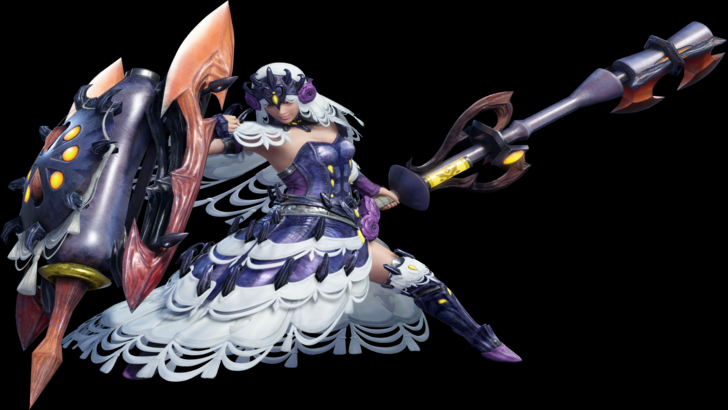 The Charge Blade (Monster Hunter 4) is a transforming weapon with Sword Mode (phial charging) and Axe Mode (Amped Elemental Discharge). It's known for its versatility and powerful finishers.
The Charge Blade (Monster Hunter 4) is a transforming weapon with Sword Mode (phial charging) and Axe Mode (Amped Elemental Discharge). It's known for its versatility and powerful finishers.
Its gameplay requires mastering Guard Points for efficient phial charging and smooth mode transitions. Different phials offer varied effects.
The Charge Blade's complexity and rewarding mastery make it a truly versatile weapon.
Future Weapons?
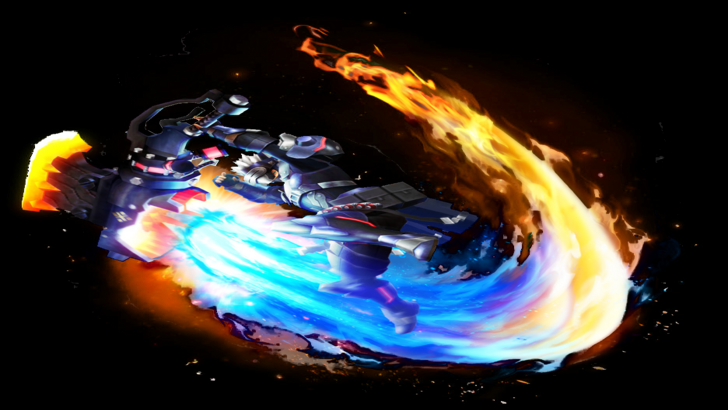 While Monster Hunter Wilds features fourteen weapons, more exist in the series' history. Future installments may introduce new weapons or revive older ones. The series' longevity suggests continued weapon expansion.
While Monster Hunter Wilds features fourteen weapons, more exist in the series' history. Future installments may introduce new weapons or revive older ones. The series' longevity suggests continued weapon expansion.
You may also like...
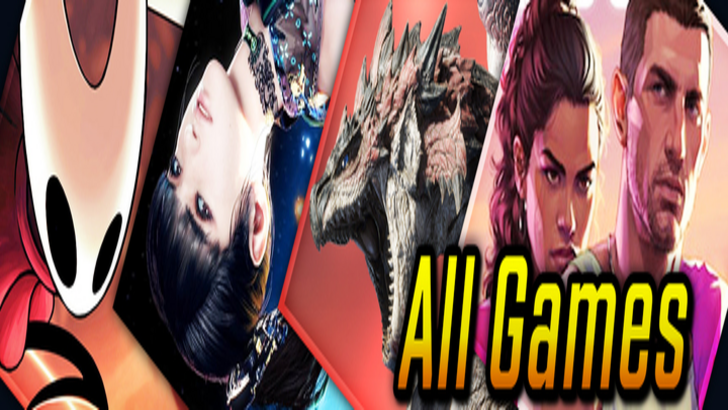
 Home
Home  Navigation
Navigation






 Latest Articles
Latest Articles
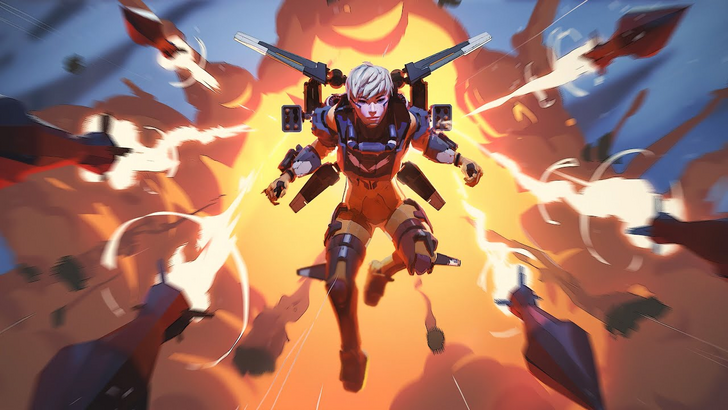


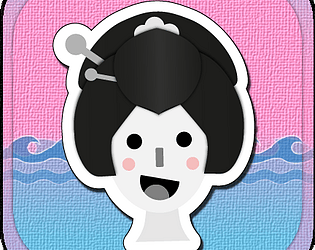



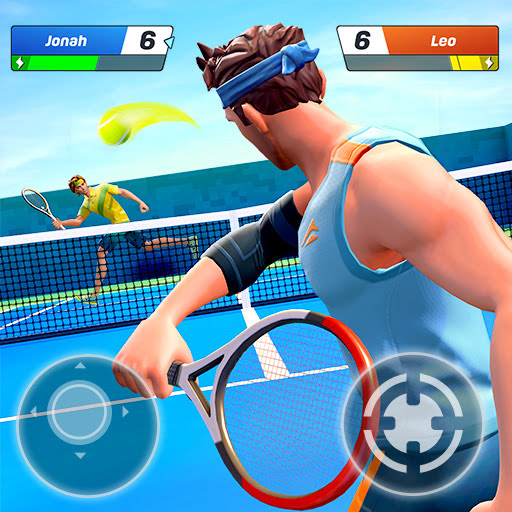

 Latest Games
Latest Games




